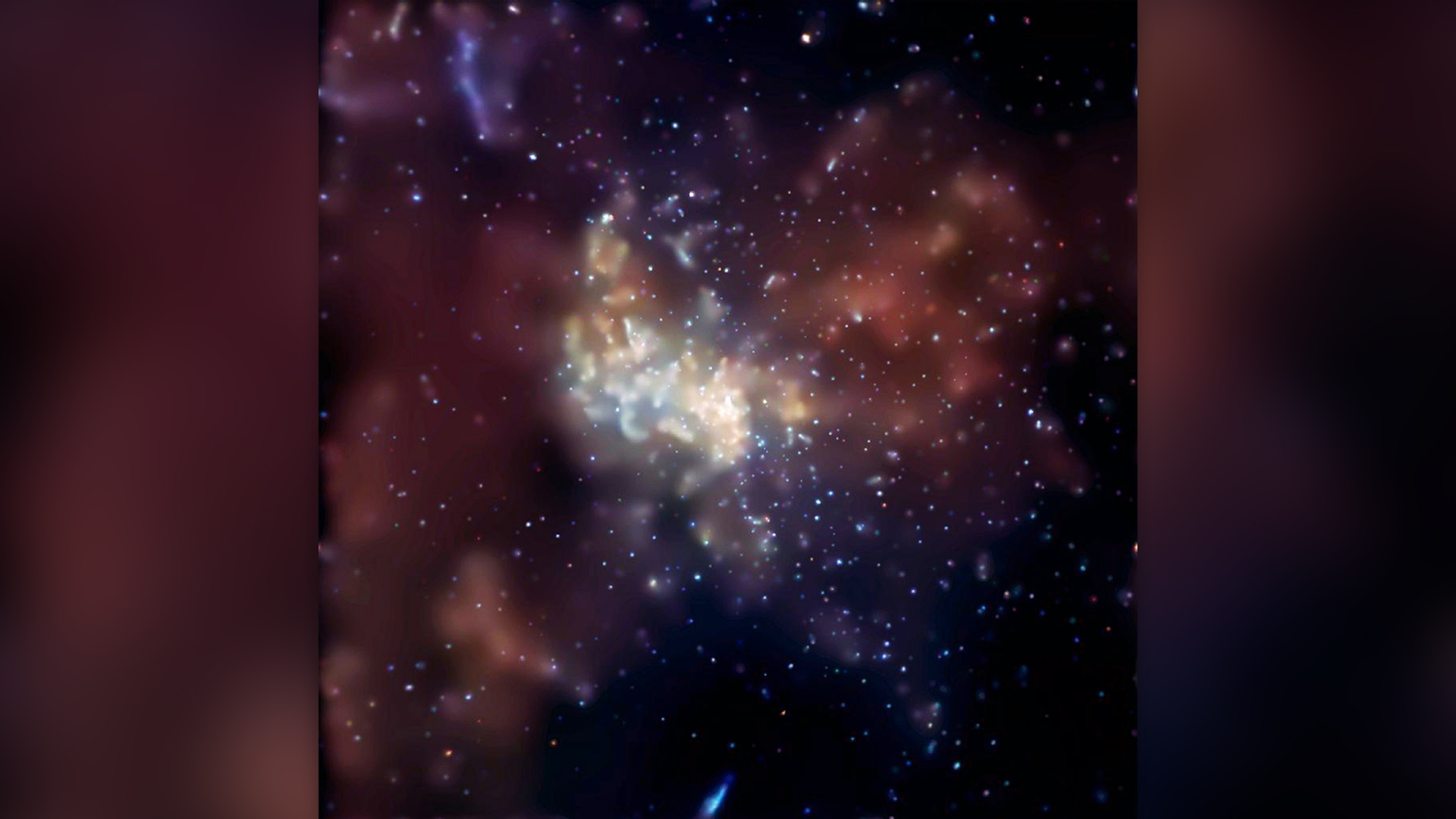Mysterious 'fountain of youth' near Milky Way's central black hole is full of newborn stars that shouldn't exist
New James Webb Space Telescope observations might be able to explain why clusters of young stars keep turning up near the Milky Way's central black hole.

The James Webb Space Telescope and other galactic surveys have confirmed there's a stellar "fountain of youth" birthing new stars near the Milky Way's central black hole, where they shouldn't be able to exist.
Near the galaxy's supermassive black hole, strong radiation and gravitational forces create extremely inhospitable conditions for new star formation.
However, for decades now, astronomers have seen young stars near the galactic center, defying all their predictions. A particular cluster of young stars, known as IRS13, was discovered over 20 years ago. By combining data from many different telescopes, astronomers confirmed the stars in IRS13 are only about 100,000 years old, cosmic newborns compared to Earth's sun (4.6 billion years old), let alone the Milky Way itself (13.6 billion years old).
"The analysis of IRS13 and the accompanying interpretation of the cluster is the first attempt to unravel a decade-old mystery about the unexpectedly young stars in the Galactic Center," study lead author Florian Peißker, an astronomer at the University of Cologne's Institute of Astrophysics, said in a statement.
Peißker and colleagues believe this star cluster could be key to understanding how such young stars got to where they shouldn't be. In this new research, they have taken the first steps to unravel how such young stars formed in this forbidding galactic neighborhood.
"We have gathered extensive evidence that very young stars within the range of the supermassive black hole may have formed in star clusters such as IRS13," added Peißker. "This is also the first time we have been able to identify star populations of different ages — hot main sequence stars and young emerging stars — in the cluster so close to the center of the Milky Way."
Their observations suggest that some stars in IRS13 (the hot main sequence stars) may have started farther away in the galactic suburbs, and then migrated closer to the dense metropolis around the black hole until they were finally trapped in its gravitational pull. As the IRS13 cluster was dragged in, it formed a bow shock — a pile-up of material where the tip of the cluster plowed through the dusty interstellar medium, somewhat like the bow of a ship cutting through the water — which stimulated more stars (the young emerging stars) to form.
Get the world’s most fascinating discoveries delivered straight to your inbox.
The James Webb Space Telescope also peered deep into the galactic center and identified signs of water ice in the galactic center near IRS13 — another fingerprint of dusty, newly-forming stars. Hopefully, JWST will soon reveal more about IRS13, giving astronomers more evidence in the mystery of the young stars in the Milky Way's core.
The new-star-forming region was described Oct. 10 in The Astronomical Journal.

Briley Lewis (she/her) is a freelance science writer and Ph.D. Candidate/NSF Fellow at the University of California, Los Angeles studying Astronomy & Astrophysics. Follow her on Twitter @briles_34 or visit her website www.briley-lewis.com.


